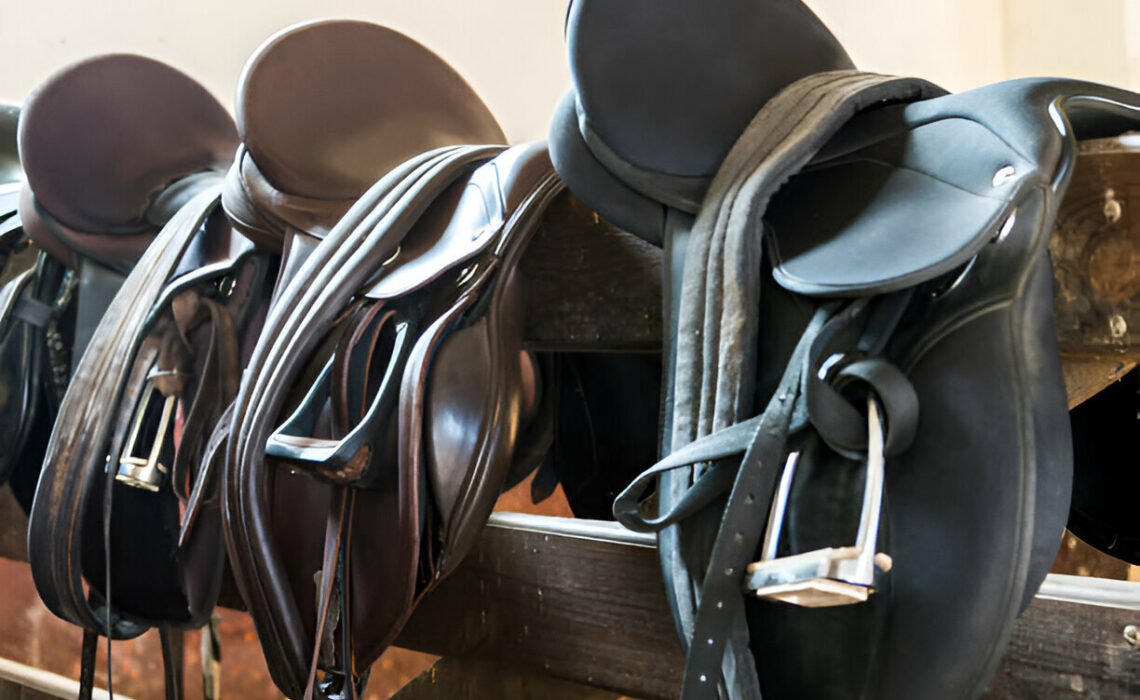
Have you ever pondered over the mystery behind a well-fitted saddle? Hoping to understand why some horses look exceptionally comfortable and controlled under their rider? The answer could very well sit (literally!) in a good-quality, well-weighted stock saddle. With horse riding’s incredible legacy steeped in history, certain things don’t change, and finding the right saddle for the job certainly sits high on the list of enduring issues.
We’re diving into the deep world that encompasses stock saddles, exploring every nook and cranny. We’re utilising our bit and bridle to stifle the confusion and firmly straddle the robust, yet intricate subject of horse saddles, which plays a pivotal role in the rider’s comfort, control, and horse’s endurance.
Can’t wait to unbridle your curiosity? Giddy up, it’s time to trot into the world of stock saddles, where we’ll illuminate the marriage between equestrian and saddle, elaborating on the various aspects; design, functionality, fit, and more. Buckle up, let’s journey in this equine expedition!
The Importance of a Quality Stock Saddle
You might ask, why the fuss about a horse’s saddle? Isn’t it just a seat between rider and horse? Well, not quite. Like your cherished pair of worn-in boots or your favourite comfy chair, a well-fitted stock saddle becomes a second home for the horse rider. Who could risk jeopardising comfort and control while riding or working?
Furthermore, a poorly fitted saddle can hinder your horse’s performance and breed various health ailments. It’s critical to find a stock saddle that perfectly suits both horse and rider to ensure horse stamina and control. Remember, a comfortable horse means a better performing and stable horse.
Stock saddles aren’t merely an accessory; they are crucial equipment bearing on both the safety and performance of the horse-rider duo. A good saddle is the key to a wonderful riding experience, and you don’t put a cheap lock on a treasure chest, do you?

Decoding the Anatomy of a Stock Saddle
What makes a stock saddle different from standard English or Western saddles? This might be what’s racing through your mind. To understand the nuances, we need to understand the core anatomy of the stock saddle which includes the tree, seat, panels, cantle, pommel, girth, and stirrups.
Stock saddles typically feature a deeper seat for added security plus comfort when spending lengthy hours on horseback. Its structure caters to balance, flexibility, and providing a comfortable platform for horse-rider communication.
Diving deeper, the role of each part adds a significant detail to the whole masterpiece, decoding one component at a time uncovers the great functionality of this saddle type. It’s this careful thought placed in the design and construction of stock saddles that distinguishes them as preferred equipment for ranchers and pleasure riders.
Customization: Fine-Tuning the Perfect Saddle
Comfort, control, and endurance, while seeming straightforward, require a great deal of personalized attention. Stock saddles demand customization to fine-tune them, ensuring they adapt to the rider’s body and horse’s unique curves.
Customization can take different forms – adjusting the size of the seat for the rider’s comfort, the shape of panels suiting the horse’s back, modifying stirrup lengths, varying the thickness of the padding, and even the design and material of the saddle.
Every horse and rider combo is unique, and so should be your stock saddle. In customization, we acknowledge the idiosyncrasies of both horse and rider to enhance their mutual performance and ensure the saddle is an extension of their bond, not a barrier.
Care and Maintenance: Ensuring a Saddle’s Longevity
Investing in a good stock saddle is half the battle won; the balance lies in effective care and maintenance. It’s like owning a vintage car; the better you maintain it, the more pleasing and well-performing it stays over the years.
From frequent cleaning, oiling, and conditioning to regular checks for wear and tear, the maintenance of your stock saddle is vital. Proper care not only prolongs the saddle’s lifespan but also ensures optimal functionality and safety for both horse and rider.
The Pros of Stock Saddles
While stock saddles assert their dominance with various pros, like providing comfort, greater control, improved horse endurance, customization possibilities, and suiting both recreational and professional use, they aren’t without their cons.
Conclusion
As we rein in this journey, we can now appreciate the importance of a quality stock saddle in the world of horse riding. The right stock saddles, one custom fitted to the unique duo of horse and rider, ensures a harmonious interplay between comfort, control, and endurance.
Indeed, selecting the perfect saddle is an art and not an overnight process. It demands attention, patience, and a willingness to invest the necessary time and resources. Yet, the rewards are invaluable, promising a sustainable, comfortable, and top-performing riding experience for both the horse and rider.
A stock saddle is more than a piece of equipment; it’s an essential link between rider and horse, a facilitator of graceful, effective communication, the key to comfort and control, and ultimately, a cornerstone for a successful, enjoyable journey as a horse rider.





